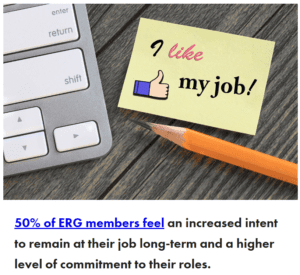Leaders can keep employees engaged by implementing these strategies.
By Sara Rahmani
It’s no secret that quiet quitting, employee disengagement, and the potential threat of layoffs are impacting company productivity and morale. In anticipation of an economic slowdown, companies are paying more attention to productivity—which saw the largest year-on-year decline since 1948. To get a handle on the productivity issue, two thirds of medium to large-sized companies in the United States are now using data surveillance software to monitor employee activity, according to the Financial Times.
But this trend of ‘productivity paranoia’ won’t fix the root cause of employee disengagement or burnout. When companies start noticing signs of these disruptors, the onus is on the employer to ensure their staff feels connected, engaged, satisfied, and valued in the workplace.
Employees are Jumping Ship
The pandemic has caused a significant shift in the labor landscape. Employees see factors like flexibility, better pay and benefits, opportunities for growth, and supportive workplace culture as non-negotiables for accepting an offer of employment or staying at a job. In the past, employers perceived these factors as perks they could leverage. But the toll on mental health that the pandemic has taken on many employees, coupled with a talent shortage that followed, has changed that outlook.
Know What Employees Want
Preventing employee disengagement starts with understanding what employees want and looking at these desires from a generational perspective. Not all employees want the same thing.
Gen Z
Gen Z employees, in particular, expect more from their employers. A survey conducted by Talent LMS and Bamboo HR found that the top three reasons Gen Zers quit their jobs were:
- unsatisfactory salary (54%)
- burnout and lack of work-life balance (42%); and
- not doing something they’re passionate about (37%).
Millennials
According to Great Place to Work, only 79% of Millennials say their work has special meaning, compared to 90% of baby boomers. For Millennials and Gen Zers, purpose impacts how they see their future. When Millennials believe their work has meaning—that it’s more than “just a job”—they are three times more likely to stay.
Another important need for this generation is clear expectations. Setting clear expectations is a must have in order to feel secure and prepared in the workplace.
Baby Boomers
While the Boomer generation may place less emphasis on having purpose in their job, they do want better work/life balance and more visibility. Indeed found that this generation “wants their manager to see them showing up to work on time every day and working hard until the workday ends.” This visibility and recognition from management also results in the need to know a company is still investing in their growth and knowledge development, no matter their age.
When companies take action to build inclusive, engaging policies in response to employee needs, they send a message that employees matter. In turn, employees are more likely to trust in and produce for their organization.

Solicit Feedback
Regularly survey employees to understand what they want and need, and act on their feedback. People want to feel heard and seen. By taking action based on what employees feel is working well and what needs improvement shows a company values its people and their opinions. And those people will feel more trust in their organizations as a result.
Companies should also consider alternative structures that give employees a chance to interact with peers and workers from other departments who they don’t typically interact with. Employee resource groups (ERGs) allow employees to connect based on similar experiences, backgrounds, or interests. Conversely, a company can also create ERGs to break down barriers between employees with different backgrounds to build empathy. Bringing people together who aren’t in usual contact with each other—either physically or virtually—elevates engagement and allows genuine social ties to form.
ERGs can also expose pain points that eventually drive employees to leave the company or quietly quit. Acknowledging these issues enables companies to act before it’s too late. According to a survey by Catalyst, 50% of ERG members reported “an increased intent to remain at their job long-term,” as well as a higher level of commitment to their roles.
Mentoring Programs
Mentoring is another way of making employees feel valued. Whether it’s one-on-one career mentoring, reverse mentoring, or mentoring circles, mentoring relationships in the workplace enable employees to:
- seek personal or professional guidance;
- build confidence;
- understand company culture;
- gain fresh perspectives; and
- learn new skills and knowledge.
For companies like Amazon, mentoring is a big driver of employee connectivity in a largely remote work environment. It helps to keep employees on track with their advancement goals, while better integrating them into the culture and workings of the organization.
Ultimately, improving and maintaining employee engagement requires an ongoing commitment. In order to diminish burnout and improve employee morale and productivity, companies need to develop clear employee experience strategies. It will not be accomplished in a one-and-done manner. Open dialogue, trial and error, and continuous development are the best ways to support employees to do their best work.
Sara Rahmani is the vice president of people experience and DEI at Chronus.














